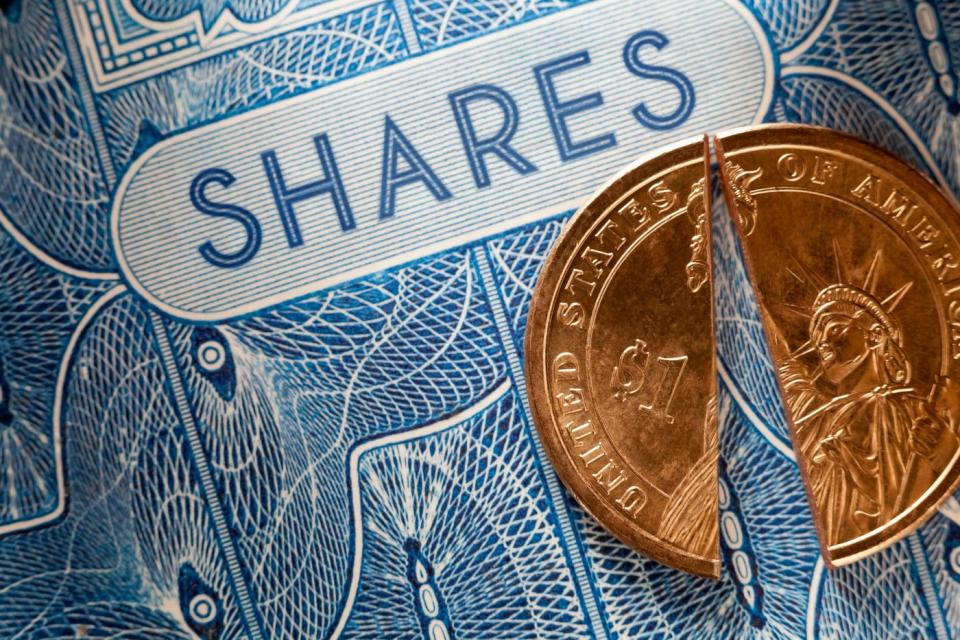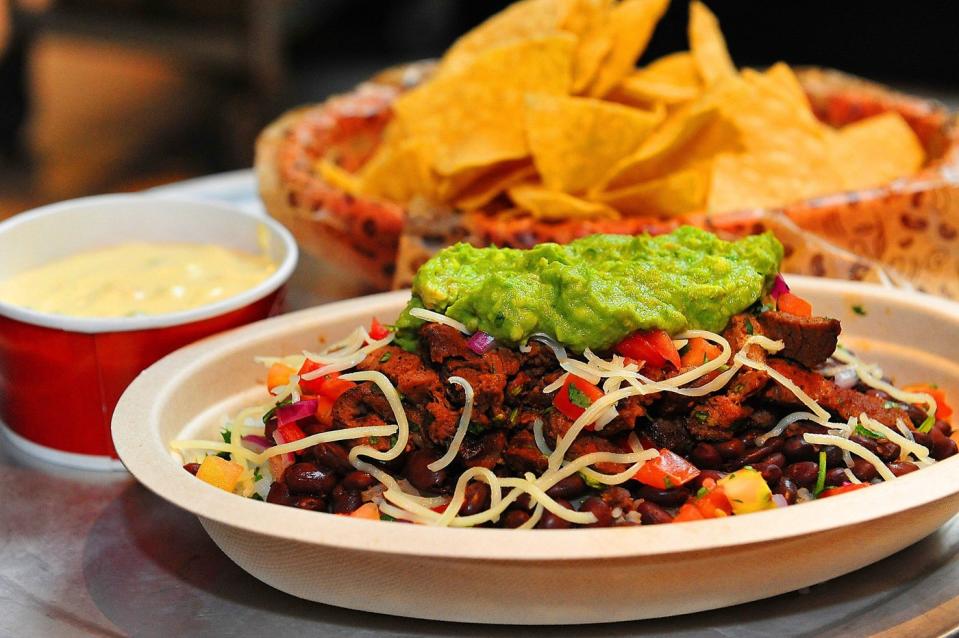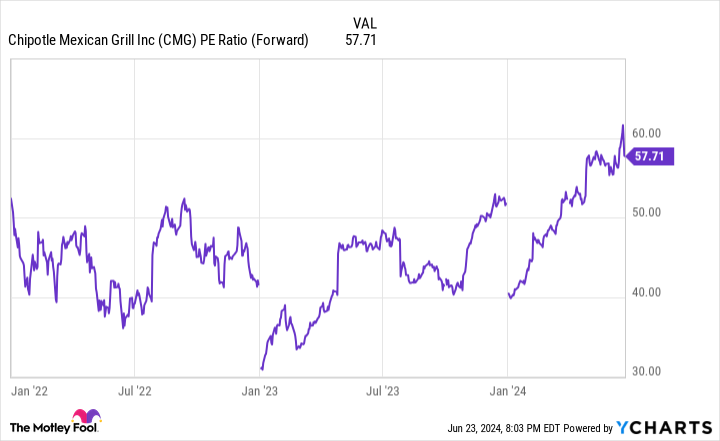Although artificial intelligence (AI) and the “Magnificent Seven” stocks are widely credited with lifting the major stock indexes to record levels, it can be argued that stock splits are the hottest trend on Wall Street right now.
A stock split is an event that allows a publicly traded company to alter its share price and outstanding share count by the same factor. Since 2024 began, nine top-notch businesses have announced and/or completed a split.

Stock splits come in two varieties — forward and reverse — with investors decidedly favoring the former. Forward-stock splits are designed to make shares more nominally affordable for everyday investors, while a reverse-stock split aims to increase a company’s share price to ensure it meets the minimum listing standards of a major stock exchange, or perhaps has a high enough share price to attract attention from institutional investors and mutual funds.
After watching retail kingpin Walmart and AI titan Nvidia complete their respective 3-for-1 and 10-for-1 forward splits, it’s time for fast-casual restaurant chain Chipotle Mexican Grill (NYSE: CMG) to join this elite stock-split club. With its stock split imminent, here are the 10 things you need to know.
1. Chipotle’s forward split is historic
On March 19, Chipotle’s board of directors announced a 50-for-1 forward split, which marks one of the largest nominal stock splits for any company in the history of the New York Stock Exchange. This split, which was approved by the company’s shareholders earlier this month, with increase the outstanding share count by a factor of 50 while lowering the share price to 1/50th of its value.
2. It’ll become effective following the closing bell
When I said Chipotle’s stock split is “imminent,” I wasn’t exaggerating. The effective date for its 50-for-1 split is after the close of business today, June 25. Before trading begins on June 26, Chipotle’s share price will be reduced to 1/50th of what it closes at today.
Keep in mind that it’s not uncommon for online brokers to take up to 24 hours to recognize that a stock split has taken place. If you’re a Chipotle shareholder, don’t panic if you notice a sizable (but incorrect) unrealized loss during the morning hours of June 26.
3. Stock splits are purely cosmetic
Although stock splits are all the rage on Wall Street right now, they’re purely cosmetic. Altering a company’s share price and outstanding share count doesn’t impact its market cap or operating performance. Whatever market cap Chipotle Mexican Grill ends with on June 25 will be precisely what it’s worth on a post-split basis just prior to the start of trading on June 26.
4. Chipotle’s employees are a prime catalyst behind its stock split
Something you might not realize is that Chipotle’s first stock split in more than 18 years as a publicly traded company is being undertaken for its employees just as much as retail investors. The company wants to encourage its workers to participate in its employee stock purchase plan (ESPP), which’ll be far more enticing when shares of the company trade closer to $64 instead of $3,200.
Walmart’s 3-for-1 split was also enacted to encourage workers to participate in the company’s ESPP.
5. The company is enjoying exceptional pricing power
Since pricing its shares at $22 for its initial public offering (IPO) in January 2006, Chipotle’s stock has increased by more than 14,000%! One of the reasons the company has been such a phenomenal investment is because its management team realized early on that consumers would willingly pay more for its food if it used responsibly raised meats, prepped its food daily in its restaurants, and sourced its vegetables locally (when possible). This exceptional pricing power has helped fuel Chipotle’s sustained outperformance.


6. Having a limited menu is a ticket to success in the restaurant industry
Another catalyst behind Chipotle’s historic 50-for-1 forward split is the company’s limited menu. Shunning the idea that “bigger is better,” Chipotle’s management team has stuck to a relatively small menu, which helps to maximize food prep efficiency and keeps lines moving quickly in its restaurants.
Furthermore, having a smaller menu helps Chipotle generate a lot of buzz when it does introduce a new food item.
7. Innovation has been a key growth driver
The company’s innovation has played a key role in its greater-than 14,000% return since pricing its IPO in 2006. Beyond just introducing a new food item every now and then, the company made waves with its addition of dedicated mobile order drive-thru lanes, which it calls “Chipotlanes,” beginning in 2018. Chipotlanes are what helped the company thrive during the COVID-19 pandemic.
8. Stock-split stocks outperform the broader market
The reason investors flock to stock-split stocks is because they historically run circles around the broader market. Between 1980 and the present, data from Bank of America Global Research shows that the average company enacting a forward split has returned 25.4% in the 12 months following its stock-split announcement. By comparison, the benchmark S&P 500 has delivered an 11.9% average return over the same timeline.
9. Billionaire investors have a mixed view of Chipotle’s stock
Even though stock-split stocks have history on their side, and Chipotle has leaned on a number of competitive advantages to grow its earnings per share, Wall Street’s brightest money managers are mixed on what the future holds for this top-performing fast-casual restaurant chain.
Based on Form 13F filings that detail first-quarter trading activity, billionaires Ken Griffin of Citadel Advisors, John Overdeck and David Siegel of Two Sigma Investments, and Jeff Yass of Susquehanna International were all buyers of Chipotle stock.
Meanwhile, activist investor Bill Ackman of Pershing Square Capital Management, Steven Cohen of Point72 Asset Management, and Israel Englander of Millennium Management all reduced their fund’s respective positions ahead of the company’s imminent stock split.
10. Chipotle’s stock is exceptionally pricey (and a split doesn’t change that)
Last but certainly not least, Chipotle Mexican Grill’s valuation makes absolutely no sense — and a 50-for-1 stock split isn’t going to change that. While there’s no question that the company deserves a valuation premium for continually out-innovating and out-executing other fast-casual restaurant chains, Chipotle’s same-store sales growth of 7% during the first quarter doesn’t come close to meriting a multiple of 58 times forecast earnings this year or a forward price-to-earnings (P/E) ratio of 48.
Once the stock-split euphoria surrounding Chipotle wears off, don’t be surprised if its stock undergoes a sizable correction.
Should you invest $1,000 in Chipotle Mexican Grill right now?
Before you buy stock in Chipotle Mexican Grill, consider this:
The Motley Fool Stock Advisor analyst team just identified what they believe are the 10 best stocks for investors to buy now… and Chipotle Mexican Grill wasn’t one of them. The 10 stocks that made the cut could produce monster returns in the coming years.
Consider when Nvidia made this list on April 15, 2005… if you invested $1,000 at the time of our recommendation, you’d have $775,568!*
Stock Advisor provides investors with an easy-to-follow blueprint for success, including guidance on building a portfolio, regular updates from analysts, and two new stock picks each month. The Stock Advisor service has more than quadrupled the return of S&P 500 since 2002*.
*Stock Advisor returns as of June 24, 2024
Bank of America is an advertising partner of The Ascent, a Motley Fool company. Sean Williams has positions in Bank of America. The Motley Fool has positions in and recommends Bank of America, Chipotle Mexican Grill, Nvidia, and Walmart. The Motley Fool has a disclosure policy.
Chipotle Mexican Grill’s 50-for-1 Stock Split Is Imminent: 10 Things You Need to Know was originally published by The Motley Fool
Source Agencies



